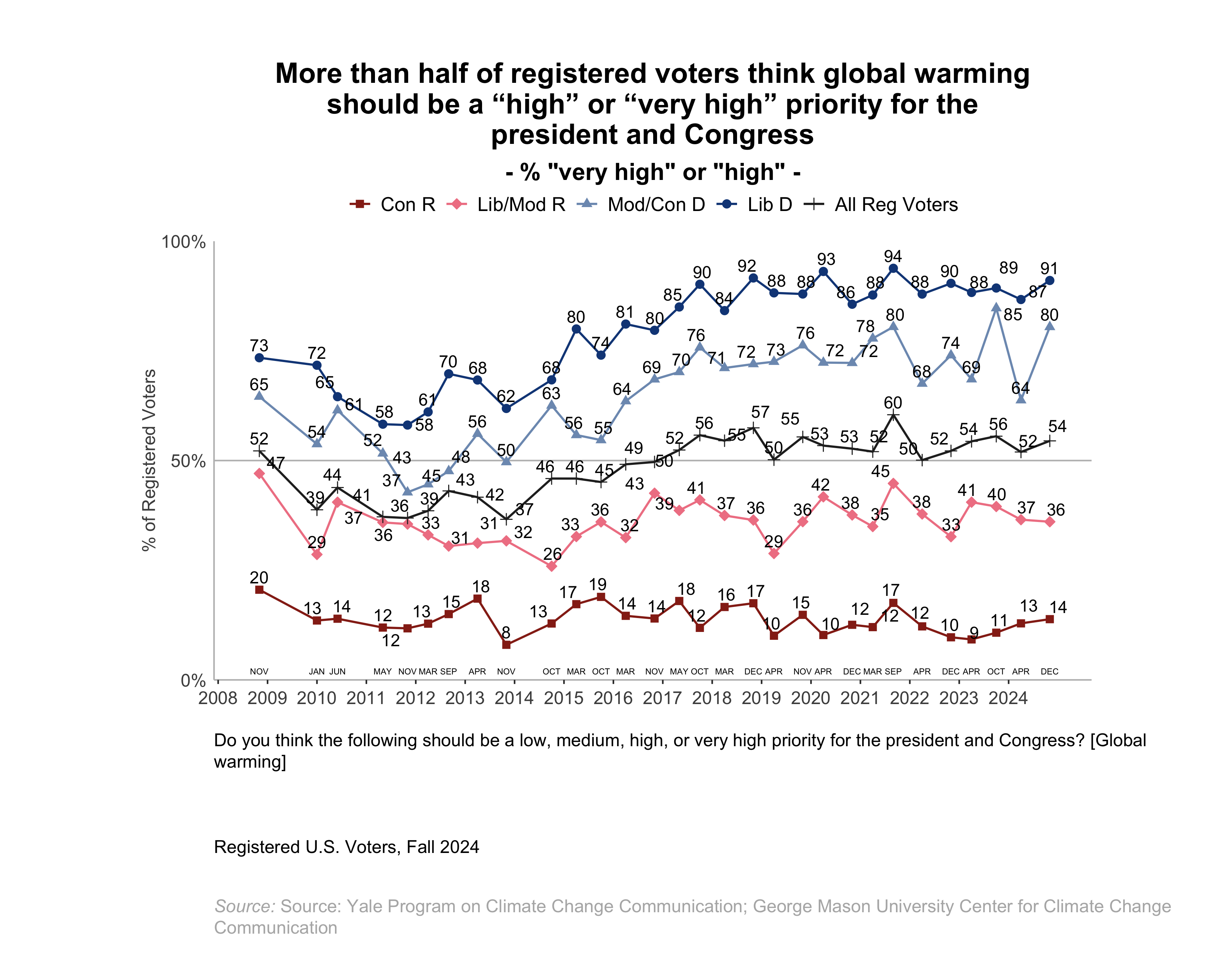Report · Jan 30, 2025
Climate Change in the American Mind: Politics & Policy, Fall 2024
By Anthony Leiserowitz, Edward Maibach, Seth Rosenthal, John Kotcher, Emily Goddard, Jennifer Carman, Teresa Myers, Marija Verner, Jennifer Marlon, Matthew Goldberg, Joshua Ettinger, Julia Fine and Kathryn Thier
Filed under: Policy & Politics
1. Global Warming and Clean Energy as Government Priorities
1.1 More than half of registered voters think global warming should be a “high” or “very high” priority for the president and Congress.
More than half of registered voters (54%) think global warming should be a high or very high priority for the president and Congress. This includes large majorities of liberal Democrats (91%) and moderate/conservative Democrats (80%), and about one-third of liberal/moderate Republicans (36%). Few conservative Republicans (14%) think so.
1.2 Most registered voters think developing sources of clean energy should be a “high” or “very high” priority for the president and Congress.
About six in ten registered voters (63%) think developing sources of clean energy should be a high or very high priority for the president and Congress. This includes large majorities of liberal Democrats (93%) and moderate/conservative Democrats (87%), and about half of liberal/moderate Republicans (47%), but only 26% of conservative Republicans. Republicans’ support for making clean energy a priority has trended downward since 2018.

